Baskenland |
|
|
|
| Übersicht – Contents: | |
Diese Seite ist Teil des Projektes
Baskenland |
|
|
|
| Übersicht – Contents: | |
Flagge – Flag: |
|
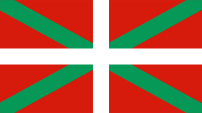 |
Flagge des Baskenlands |
| historische und andere Flaggen – historical and other Flags: | |
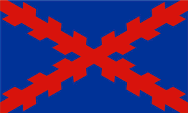 |
18.-19. Jhd./18th-19th century, |
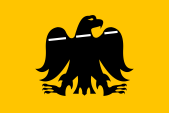 |
"Arrano Beltza", |
| Die Flagge des Baskenlandes ist einfarbig rot mit einem weißen Georgskreuz und einem grünen Andreaskreuz. Das Rot steht für das während des Freiheitskampfes vergossene Blut, Grün symbolisiert die Heilige Eiche von Guernica und das weiße Kreuz steht für den katholischen Glauben. Die Flagge wird "Ikkurina" genannt und sie wird seit 1894 verwendet. Offiziell eingeführt wurde sie am 08.10.1936 und war bis September 1937 gültig. Danach, unter der Herrschaft des Generals Franco, war sie verboten. Nach Francos Tod (20.11.1975) wurde der Gebrauch ab dem 21.09.1976 nicht mehr bestraft und dem 19.01.1977 offiziell erlaubt, am 18.12.1978 wurde die Flagge wieder offiziell eingeführt und am 22.12.1979 im Zusammenhang mit dem Autonomiestatut für das Baskenland übernommen. Die Farben der Flagge sind im "Art. 3 Abs. 1979 des Organgesetzes 18/12 vom Dezember 1980 über das Autonomiestatut des Baskenlandes" niedergelegt, zuletzt geändert am 10.10.2005. Sie werden folgendermaßen angegeben: Grün = Pantone 347, Rot = Pantone 485. Flaggen mit einem grünen Andraskreuz tauchten schon sehr früh in der Geschichte der Basken auf. Die Grafschaft Bizkaia nahm zuerst eine rote Flagge an, das weiße Kreuz erscheint im Wappen von Bizkaia, ebenso wie die Heilige Eiche. Eine weitere wichtige Flagge der Basken ist der "Arrano Beltza", der Schwarze Adler auf goldenem Grund. Er geht auf das Siegel von König Sancho III. zurück und wird häufig asymmetrisch dargestellt. Die Asymmetrie wird meist durch eine schräge goldene oder weiße Linie im oberen Bereich des Adlers angedeutet oder verstärkt. Jede Baskische Provinz (in Spanien) oder Region (in Frankreich) hat eine eigene Flagge. In Frankreich sind diese Flaggen jedoch nicht offiziell. Frankreich gliedert sich nicht (mehr) in historische Regionen sondern in willkürlich festgelegte Departements, die keine eigenen Flaggen haben. | The flag
of the Basque Country is plain red with a white St. George's Cross and a
green St. Andrew's Cross. The colour red represents the blood spilled during
the struggle for freedom, green symbolises the Holy Oak of Guernica and the
white cross represents the Catholic faith. The flag is called "Ikkurina" and
has been in use since 1894. It was officially introduced on 8th of Oktober in 1936 and was used until September 1937. After that, under the rule of General Franco, it was banned. After Franco's death (20th of November in 1975), its use was no longer punished from 21st of September in 1976 and officially permitted from 19th of January in 1977. The flag was officially reintroduced on 18th of December in 1978 and was taken over on 22nd of December in 1979 in connection with the Statute of Autonomy for the Basque Country. The colours of the flag are laid down in "Art. 3 (1979) of Organic Law 18/12 of December 1980 on the Statute of Autonomy of the Basque Country", last amended on 10th of October in 2005. They are indicated as follows: Green = Pantone 347, Red = Pantone 485. Flags with a green St. Andrew's Cross appeared very early in the history of the Basques. The county of Bizkaia first adopted a red flag, the white cross appears in the coat of arms of Bizkaia, as does the Sacred Oak. Another important flag of the Basques is the "Arrano Beltza", the black eagle on a golden background. It goes back to the seal of King Sancho III. and is often depicted asymmetrically. The asymmetry is usually indicated or reinforced by an oblique golden or white line in the upper part of the eagle. Each Basque province (in Spain) or region (in France) has its own flag. In France, however, these flags are not official. France is not (any longer) divided into historical regions but into arbitrarily defined departments, which do not have their own flags. |
| Quelle/Source: Wikipedia (ES), Wikipedia (DE), Flags of the World, Volker Preuß | |
Wappen – Coat of Arms: |
|
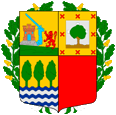 |
seit/since 1986, Wappen des Baskenlands – coat of arms of Basque Country, Quelle/Source, nach/by: Wikipedia (ES) |
historische Wappen – historical Coats of Arms: |
|
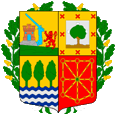 |
1936–1937, 1979–1986, Wappen des Baskenlands – coat of arms of Basque Country, Quelle/Source, nach/by: Wikipedia (ES) |
| Das heutige Wappen des Baskenlands wurde am 02.11.1978 eingeführt. Es zeigt einen gevierteilten Schild. In Feld 1 eine mit einem Schwert bewaffnete Burg die einen roten Löwen abwehrt (Araba), in Feld 2 die Heilige Eiche von Guernica, dahinter ein weißes Kreuz, golden umrandet mit acht kleinen roten Diagonalkreuzen (Bizkaia), in Feld 3 blaue und weiße Wellenlinien und drei Bäume (Gipuzkoa). Das Feld 4 ist einfarbig rot. Es steht für Nafarroa (Navarra). Bis 1986 war in diesem Feld die komplette Heraldik von Nafarroa zu sehen, jedoch intervenierte die Regierung dieser Region im Jahre 1982 gegen die Verwendung ihrer Symbolik. Hinter dem Schild ein Kranz aus Eichenzweigen der von grünen und weißen Bändern zusammengehalten wird. | The
today’s coat of arms of the Basque Country was introduced on 2nd of November
in 1978. It shows a quartered shield. In field 1 a castle armed with a sword
warding off a red lion (Araba), in field 2 the Heilige Oak of Guernica, in
the background a white cross, golden bordered with eight small red diagonal
crosses (Bizkaia), in field 3 blue and white wave lines and three trees
(Gipuzkoa). The field 4 is single-coloured red. It stands for Nafarroa
(Navarra). In that field was to see the whole heraldry of Nafarroa until 1986, but the government of that region intervened in the year 1982 against the use of its symbolism. Behind the shield a wreath of oak twigs which is bonded by green and white ribbons. |
| Quelle/Source: Wikipedia (ES), Volker Preuß | |
| Die Baskischen Gebiete – The Basque Territories: "Euskal Herria" | |
| Die Regionen in denen Basken leben, 1.) in Spanien: Baskenland, Navarra, 2.) in Frankreich: Niedernavarra, Soule und Labourd werden von den Basken zu dem Begriff "Euskal Herria" zusammengefasst. | The
regions where Basques live in, 1st) in Spain: Basque Country, Navarra, 2nd) in France: Lower Navarra, Soule and Labourd are summarized by the Basques with the word "Euskal Herria". |
|
|
| Landkarte/map: Volker Preuß | |
| Nafarroa (span. Navarra) | |
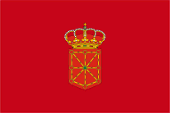 |
Navarra, Autonome Region Spaniens – Autonomous Region of Spain (mehr Info/more Info? → hier klicken – click here) |
|
|
|
| Bizkaia (span. Vizcaya) | |
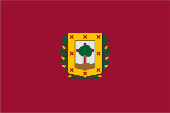 |
Biscaya, Provinz des Baskenlandes – province of Basque Country, 2.217 km², 1.149.344 Ew./inh. (2022) Haupstadt/capital: Bilbo (Bilbao), Quelle/Source, nach/by: Wikipedia (ES) |
|
|
|
| Gipuzkoa (span. Guipúzcoa) | |
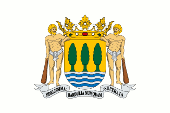 |
Gipuzkoa, Provinz des Baskenlandes – province of Basque Country, 1.980 km², 724.418 Ew./inh. (2022) Haupstadt/capital: Donostia (San Sebastian), Quelle/Source: HansenBCN, Public domain, via Wikimedia Commons |
|
|
|
| Araba (span. Álava) | |
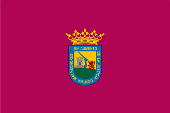 |
Álava, Provinz des Baskenlandes – province of Basque Country, 3.032 km², 334.412 Ew./inh. (2022) Haupstadt/capital: Vitoria (Gasteiz), Quelle/Source, nach/by: Wikipedia (ES) |
|
|
|
| Lapurdi (frz. Labourd) | |
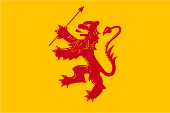 |
Labourd, Baskische Region in Frankreich – Basque region in France, 858 km², 205.000 Ew./inh. Haupstadt/capital: Ustaritz, Quelle/Source, nach/by: Wikipedia (FR) |
|
|
|
| Benafarroa (frz. Basse-Navarre) | |
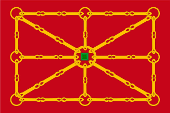 |
Niedernavarra – Lower Navarra, Baskische Region in Frankreich – Basque region in France, 1.323 km², 31.750 Ew./inh. Haupstadt/capital: Saint-Jean-Pied-de-Port, Quelle/Source, nach/by: Wikipedia (ES) |
|
|
|
| Xiberua (frz. Soule) | |
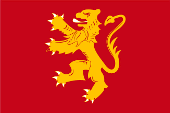 |
Soule, Baskische Region in Frankreich – Basque region in France, 785 km², 15.000 Ew./inh. Haupstadt/capital: Mauléon-Licharre (Maule), Quelle/Source, nach/by: Wikipedia (ES) |
|
Die autonomen Regionen Spaniens – The autonomous Regions of Spain: Interaktive Landkarte - interactive map |
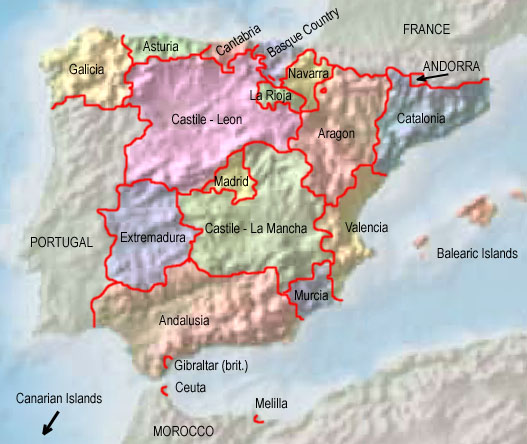 |
| Quelle/Source: Freeware, University of Texas Libraries, modyfied by: Volker Preuß |
| Zahlen und Fakten – Numbers and Facts: | |
|
|
|
|
|
|
|
|
|
|
|
|
|
|
|
Antike
· Besiedlung durch den iberischen Stamm der Vasconen ca. 600 v.Chr. · Einwanderung von Kelten, die Vasconen werden durch Vermischung zu Keltiberern, den heutigen Basken 218–201 v.Chr. · Zweiter Punischer Krieg, das Römische Reich erwirbt die Besitzungen Karthagos in Iberien, Unterwerfung der ganzen Iberischen Halbinsel bis zum Jahre 19 v.Chr., im Baskenland teilweise römische Besiedlung, teilweise Romanisierung 74 v.Chr. · Gründung der Stadt Pompeiopolis (Pamplona) durch den römischen Feldherrn Sextus Pompeius ca. 400 n.Chr. · Völkerwanderung, Durchzug von Alanen, sowie germanischer Sweben und Westgoten, die Basken können sich ihre Unabhängigkeit bewahren 580 · der Westgotenkönig Leovigild besiegt und unterwirft die Basken, das heutige Baskenland wird Teil des Westgotenreiches, Leovigild gründet die Stadt Vitoria ("Sieg") neben der westgotischen Burg Gasteiz, viele Basken fliehen über die Pyrenäen und siedeln in der fränkischen Gascogne (daher der Name) 678–680 · der Westgotenkönig Wamba besiegt und unterwirft die Basken in der Gascogne 711–714 · Vernichtung des Westgotenreichs durch von Nordafrika kommende Araber, die Westgoten ziehen sich nach Asturien, Kantabrien und in das Baskenland zurück, es gelingt den Arabern jedoch nicht Asturien, Kantabrien und das Baskenland zu erobern 778 · das Frankenreich unter Karl dem Großen erobert das Pyrenäenvorland, Errichtung der Spanischen Mark, jedoch Niederlage gegen die Basken im Tal von Ronceval (Roncesvalles) 795–812 · Wiedererrichtung der Spanischen Mark durch Karl den Großen und Ludwig den Frommen, dem Sohn von Karl dem Großen 812 · Befreiung der Stadt Pamplona von den Arabern durch die Basken, Errichtung des Königreichs Pamplona 816–851 · Herrschaft von Iñigo Arista über Pamplona 827 · erfolgloser Aufstand der Basken gegen das expandierende Frankenreich, Pamplona wird als Grafschaft Teil der Spanischen Mark 905 · der zum Grafen von Navarra (Grafschaft Pamplona) gewählte Sancho Garcia ernennt sich zum König von Navarra und macht sich vom Fränkischen Reich unabhängig 905–925 · König Sancho von Navarra befreit die Gebiete nördlich des Flusses Ebro, Teile des heutigen Aragonien und Teile Kastiliens von den Arabern 925 · Tod von König Sancho 1001–1035 · Regierungszeit von Sancho III. (der Ältere), nach seinem Tod wird das Königreich unter seine vier Söhne aufgeteilt: Garcia erhält Alt-Navarra und Biscaya, Ferdinand erhält Teile Kastiliens, Ramiro erhält Aragonien, Gonzales erhält Tudela 1076 · König Sancho Ramiro von Aragonien stürzt König Sancho IV. von Navarra und vereinigt beide Reiche 1134 · Tod von König Alfons I., Navarra wird wieder ein selbstständiges Königreich 1200 · Gebietsabtretungen an Kastilien 1234 · Tod von König Sancho VII. von Navarra, damit stibt die Dynastie Sancho in Navarra aus, das Erbe geht an Thibaut von Champagne 1285 · Johanna von Champagne, die letzte Erbin des Hauses, heiratet König Philipp IV. (den Schönen) von Frankreich aus dem Hause der Kapetinger 1328 · Tod von König Ludwig X., Aussterben der Hauptlinie der Kapetinger, Johanna II. die Tochter Ludwigs X. erbt Navarra, ihr Gemahl Philipp III. Graf von Evreux wird damit König von Navarra 1332 · Gebietsabtretungen an Kastilien 1375–1379 · Krieg Navarras (unter Karl II. [dem Bösen], Sohn von Philipp III.), Wales und Aragoniens gegen Frankreich und Kastilien, Navarra wird verwüstet 1379 · Gebietsabtretungen an Kastilien Damit wurden zwischen 1035 und 1379 die damaligen Grafschaften und heutigen Baskischen Provinzen Araba, Biskaya und Gipuzkoa an Kastilien abgetreten, sie verbleiben bis 1979 Provinzen Kastiliens/Spaniens. Navarra – als damaliger Staat Baskischer Nation – bleibt bestehen (für weitere Geschichtsdaten zu Navarra ← hier klicken). Die Basken in den Provinzen behielten stets besondere Freiheiten, sogenannte "Fueros", die ihre Unabhängigkeit gegenüber Kastilien/Spanien zum Ausdruck brachten. 1805 · die Fueros werden eingeschränkt 1832 · die Fueros sollen ganz abgeschafft werden 1833 · die bis dato in Spanien bestehenden Teilkönigreiche und Regionen werden in Provinzen aufgeteilt, die Herrschaft Biscaya in die Provinzen Vizcaya (Bilbao), Guipúzcoa (San Sebastián) und Álava (Vitoria) 1833 · Baskischer Aufstand gegen die Spanische Regierung, die Basken schließen sich im Bürgerkrieg (Karlistenkriege) dem Lager von Don Carlos an 1840 · Friedensvertrag von Vergara, die Fueros werden bestätigt 1841 · die Fueros werden erneut eingeschränkt 1843 · Spanien gewährt Navarra und den Baskischen Provinzen Zollfreiheit 1844 · die Verfassung von vor 1805 wird wiederhergestellt, jedoch von Spanien zunehmend missachtet 1872–1876 · Baskischer Aufstand gegen die Spanische Regierung, wird niedergeschlagen 1876 · die Fueros werden erneut und besonders eingeschränkt 05.10.1936 · Bildung einer "Autonomen Region Baskenland" in den Provinzen Biskaya und Gipuzkoa, die baskische Provinz Araba kommt im Bürgerkrieg unter den Einfluss der Truppen des Generals Franco 19.06.1937 · Bilbao wird von den Truppen des Generals Franco erobert 23.10.1937 · das gesamte Baskenland wird von den Truppen Francos erobert, die Autonomie endet 1959 · Gründung der ETA (Euzkadi Ta Askatasuna) 20.11.1975 · Tod von General Francisco Franco 1978 · neue Verfassung, Spanien wird parlamentarische konstitutionelle Monarchie 22.12.1979 · das Baskenland erhält das Autonomiestatut innerhalb Spaniens (unter Zusammenfassung der Provinzen Vizcaya, Guipúzcoa und Álava), Gründung der "Autonomen Gemeinschaft Baskenland", die ETA lehnt das Statut ab und verlangt die Unabhängigkeit |
|
Antike
· settlement by the iberian tribe of the Basques (Vascons) ca. 600 B.C. · immigration of Celts, the Vascons become by mix with the Celts to Celtiberians, the today's Basques 218–201 B.C. · Second Punic War, the Roman Empire acquires the possessions of Carthago in Iberia, subjugation of whole Iberia until the year 19 B.C., in Basque Country partially Roman settlement, partial romanization 74 B.C. · foundation of Pompeiopolis Town (Pamplona) by the Roman General Sextus Pompeius ca. 400 A.D. · Great Transmigration (Migration Period), immigration of Alans, teutonic Suebs and Western Goth, the Basques are able to preserve their independence 580 · Leovigild the king of the Western Goth conquers and submits the Basques, the today’s Basque Country becomes a part of the Empire of the Western Goth, Leovigild founds the town Vitoria ("victory") beside the Western Goth castle Gasteiz, many Basques flee via the Pyrenees Mountains and settle in the Frankish Gascogne (from there the name) 678–680 · Wamba the king of the Western Goth conquers and submits the Basques in the Gascogne 711–714 · annihilation of the Empire of the Western Goth by from northern Africa coming Arabs, the Western Goth retreat to Asturia, Cantabria and Basque Country, the Arabs are not successful in the conquest of Asturia, Cantabria and Basque Country 778 · the Frankish Empire under Carl the Great conquers the foreland of the Pyrenees Mountains, establishment of the Spanish Mark in the foreland of the Pyrenees Mountains, but defeat against the Basques in the Valley of Ronceval (Roncesvalles) 795–812 · re-establishment of the Spanish Mark by Carl the Great and his son Ludvig the Pious 812 · liberation of Pamplona Town from the Arabs by the Basques, establishment of the Kingdom of Pamplona 816–851 · reign of Iñigo Arista over Pamplona 827 · nsuccessful revolt of the der Basques against the Frankish Empire, Pamplona becomes a part of the Spanish Mark as a county 905 · Sancho Garcia, elected to the Count of Navarra (County of Pamplona), nominates itself to the King of Navarra and enforces the independence from the Frankish Empire 905–925 · King Sancho of Navarra liberates the areas northern Ebro River, parts of the today's Aragonia and parts of Castile from the Arabs 925 · death of King Sancho 1001–1035 · times of the rule of Sancho III. (the Elder), after his death the kingdom becomes shared under his four sons: Garcia earns Old-Navarra and Biscaya, Ferdinand earns parts of Castile, Ramiro earns Aragonia, Gonzales earns Tudela 1076 · king Sancho Ramiro of Aragonia stürzt king Sancho IV. of Navarra and unites both empires 1134 · death of king Alfons I., Navarra becomes an independent kingdom again 1200 · ceding of territories to Castile 1234 · death of king Sancho VII. of Navarra, with this fact vanishes the dynasty of Sancho in Navarra, the heritage goes to Thibaut of Champagne 1285 · Johanna of Champagne, the last heiress of the house, marrys king Philipp IV. (the Pretty) of France from the house of the Kapetings 1328 · death of king Ludvig X., vanish of the main-line of the Kapetings, Johanna II. the daughter of Ludvigs X. inherits Navarra, her consort Philipp III. Count of Evreux becomes in this way King of Navarra 1332 · ceding of territories to Castile 1375–1379 · war of Navarra (under Carl II. [the Evil], son of Philipp III.), Wales and Aragonia against France and Castile, Navarra becomes ravaged 1379 · ceding of territories to Castile In this way were ceded to Castile the then counties and today’s Basque provinces of Araba, Biskaya and Gipuzkoa between 1035 and 1379, they remain until 1979 provinces of Castile/Spain. Navarra – then as a state of Basque nationality – exists further, for more history data about Navarra click here. The Basques in the provinces continued always special rights, so named "Fueros", which expressed their independence facing Castile/Spain. 1805 · the Fueros become limited 1832 · the Fueros should become fully abolished 1833 · the until that point in time in Spain existing partial kingdoms and regions become divided in provinces, the Reign of Biscaya in the provinces of Vizcaya (Bilbao), Guipúzcoa (San Sebastián) and Álava (Vitoria) 1833 · Basque revolt against the Spanish government, the Basques join in the civil war (Carlist Wars) the party of Don Carlos 1840 · peace treaty of Vergara, the Fueros become confirmed 1841 · the Fueros become limited again 1843 · Spain grants Navarra and the Basque Provinces trade free from customs 1844 · the constitution from before 1805 becomes reestablished, but Spain ignores it more and more 1872–1876 · Basque revolt against the Spanish government becomes suppressed 1876 · the Fueros become once more and very strong limited 5th of October 1936 · formation of an "Autonomous Region od Basque Country" in the provinces of Biskaya and Gipuzkoa, the Basque province of Araba comes in the civil war under control of the troops of General Franco 19th of June 1937 · Bilbao becomes conquered by the troops of General Franco 23th of October 1937 · whole Basque Country becomes conquered by the troops of General Franco, autonomy ends 1959 · foundation of the ETA (Euzkadi Ta Askatasuna) 20th of November 1975 · death of General Francisco Franco 1978 · new constitution, Spain becomes a parliamentary constitutional monarchy 22th of December 1979 · Basque Country gets the statute of autonomy within Spain (by summary of the provinces of Vizcaya, Guipúzcoa and Álava), establishment of the "Autonomous Community of Basque Country", ETA rejects the statute and demands independence |
| Quelle/Source: Wikipedia (ES), World Statesmen, RetroBib Retrobibliothek, Volker Preuß |
| Der Name "Baskenland" geht logischerweise auf das Volk der Basken zurück, welches in der Antike "Vasconen" genannt wurde. Die Basken selber nennen sich "Euskaldunak" und das Baskenland "Euskadi". Die Regionen in denen Basken leben, 1.) in Spanien: Baskenland, Navarra, 2.) in Frankreich: Niedernavarra, Soule und Labourd (in der Gascogne) werden von den Basken zu dem Begriff "Euskal Herria" zusammengefasst. Das Französische Baskenland wird "Iparralde", das Spanische Baskengebiet (Autonome Gemeinschaft Baskenland und Autonome Gemeinschaft Navarra) wird "Hegoalde" genannt. | The name
"Basque Country" has ist roots logically in the people of the Basques, which
were named "Vascons" in the antiquity. The Basques call themselves
"Euskaldunak" and the Basque Country "Euskadi". The regions where Basques
live in, 1st) in Spain: Basque Country, Navarra, 2nd) in France: Lower
Navarra, Soule and Labourd are summarized by the Basques with the word
"Euskal Herria". The French Basque Country is called "Iparralde", and the Spanish Basque Territory (Autonomous Community of Basque Country and Autonomous Community of Navarra) is called "Hegoalde". |
| Quelle/Source: Wikipedia (ED), Volker Preuß | |